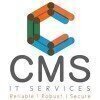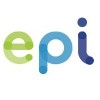


i
Precision Infomatic M Pvt Ltd
Filter interviews by
Precision Infomatic M Pvt Ltd Vmware Administrator Interview Questions, Process, and Tips
Precision Infomatic M Pvt Ltd Vmware Administrator Interview Experiences
1 interview found
(18 Questions)
- Q1. Vcenter Upgrade and Prerequisite
- Q2. Host upgrade and Prerequisite
- Q3. Vcenter Patches update and Rollback Process
- Q4. Host patches update and Rollback Process
- Q5. Vmotion Backend Process
- Q6. What is Memory ballooning?
- Ans.
Memory ballooning is a memory reclamation technique used in virtualization to reclaim memory from virtual machines.
Memory ballooning is a technique used by hypervisors to reclaim memory from virtual machines by inflating or 'ballooning' a balloon driver inside the guest OS.
The hypervisor can then allocate this reclaimed memory to other virtual machines that need it more.
Memory ballooning is typically used when the host...
- Q7. Cluster is Down ? How to fix
- Ans.
Check for underlying issues, restart services, verify network connectivity, review logs, escalate if necessary.
Check for any underlying issues that may have caused the cluster to go down
Restart the necessary services related to the cluster
Verify network connectivity between the cluster nodes
Review logs for any error messages or warnings
Escalate the issue to higher level support if necessary
- Q8. Vm Migration issue?
- Ans.
Vm migration issue can occur due to compatibility issues, network problems, or insufficient resources.
Check for compatibility issues between source and target environments
Ensure network connectivity and bandwidth are sufficient for migration
Verify that there are enough resources (CPU, memory, storage) available for the migration
Consider using migration tools like VMware vMotion or Storage vMotion
Troubleshoot any errors
- Q9. PSOD Issues ? How to fix?
- Ans.
PSOD stands for Purple Screen of Death. It is a critical error in VMware that requires troubleshooting to fix.
Check for hardware issues such as faulty memory or CPU
Review system logs for any error messages leading up to the PSOD
Update VMware ESXi to the latest version
Check for compatibility issues with hardware or software
Contact VMware support for further assistance
- Q10. What is Vm kernel?
- Ans.
The Vm kernel is a Unix-like operating system that runs on the physical hardware and manages the virtual machines on a VMware host.
It is a thin layer of software that runs directly on the host hardware to enable multiple operating systems to run on a single physical server.
It is responsible for managing the physical resources of the host machine and providing a platform for virtual machines to run.
The Vm kernel is high...
- Q11. Different between VSS and Distributed Switch?
- Ans.
VSS is a virtual switch that operates at the host level, while Distributed Switch is a single switch that spans multiple hosts.
VSS is specific to each host, while Distributed Switch is shared across multiple hosts.
VSS is managed at the host level, while Distributed Switch is managed centrally.
Distributed Switch allows for centralized network configuration and monitoring.
VSS is limited to the host's physical NICs, while...
- Q12. Explain Thin and Thick provisioning?
- Ans.
Thin provisioning allocates storage space on demand, while thick provisioning allocates all space upfront.
Thin provisioning only uses space as data is written, maximizing storage efficiency.
Thick provisioning allocates all space upfront, ensuring immediate availability but potentially wasting space.
Thin provisioning is more flexible and allows for overcommitting storage resources.
Thick provisioning is more suitable for...
- Q13. Different between Template and Clone?
- Ans.
Template is a master copy used to create multiple identical VMs, while Clone is a copy of an existing VM.
Template is a blueprint for creating VMs, while Clone is a duplicate of an existing VM.
Templates are used for deploying multiple VMs with the same configuration, while Clones are used for creating copies of specific VMs.
Templates are typically read-only, while Clones can be modified independently.
Clones retain the s...
- Q14. Virtual machine is orphaned Status?
- Ans.
Orphaned status means the virtual machine is no longer associated with its parent resource pool or host.
Orphaned virtual machines can occur when a host fails or when a VM is manually removed from a resource pool.
Orphaned VMs can still consume resources and may need to be manually removed from the inventory.
To resolve orphaned status, the VM can be re-registered with a host or resource pool.
- Q15. Virtual machine inaccessible?
- Ans.
Virtual machine may be inaccessible due to various reasons such as network issues, configuration errors, or resource constraints.
Check network connectivity to the virtual machine
Verify that the virtual machine is powered on
Ensure that the virtual machine's configuration is correct
Check for resource constraints such as CPU or memory usage
Review logs for any error messages or warnings
- Q16. What is TPM and explain?
- Ans.
TPM stands for Trusted Platform Module, a hardware-based security feature that stores cryptographic keys and provides secure boot capabilities.
TPM is a microchip that is typically installed on the motherboard of a computer or server.
It provides hardware-based security functions such as secure boot, key storage, and encryption.
TPM helps ensure the integrity of the system by verifying that it has not been tampered with.
I...
- Q17. What is admission control ?
- Ans.
Admission control is a feature in Vmware that ensures resources are available for virtual machines during failover or migration.
Admission control prevents virtual machines from being powered on if it would violate resource constraints
It helps maintain high availability by ensuring that there are enough resources available for failover
Admission control policies include slot policy, dedicated failover hosts, and resource
- Q18. What are protocol used for Storage?
- Ans.
Protocols used for Storage include iSCSI, Fibre Channel, NFS, and SMB.
iSCSI (Internet Small Computer System Interface)
Fibre Channel
NFS (Network File System)
SMB (Server Message Block)
Skills evaluated in this interview
Top trending discussions






Interview questions from similar companies

I appeared for an interview in Sep 2020.
Interview Questionnaire
1 Question
- Q1. Oops concept, solid principles, filters in MVC, basics of Angular,life cycle hook
Interview Preparation Tips

I appeared for an interview before Oct 2021.

(2 Questions)
- Q1. What is Nested List with example
- Ans.
A nested list is a list that contains other lists as its elements.
Nested lists can be created using square brackets and separating the elements with commas.
Elements of a nested list can be accessed using indexing and slicing.
Example: my_list = [[1, 2, 3], [4, 5, 6], [7, 8, 9]]
Accessing element 5: my_list[1][1]
- Q2. What is queue , explain with example
- Ans.
A queue is a data structure that follows the First In First Out (FIFO) principle.
Elements are added to the back of the queue and removed from the front.
Example: A line of people waiting for a movie ticket.
Operations: Enqueue (add element to back), Dequeue (remove element from front), Peek (view front element)
Interview Preparation Tips
Basic python
Coding skills
Skills evaluated in this interview

I appeared for an interview in Sep 2017.
Interview Questionnaire
4 Questions
- Q1. Technical interview take by client technical person actually they are hiring for another client so they took total 3 technical round and final will HR round
- Q2. Asking about life cycle of Dot net mvc contols entity frame work and SQL queries
- Q3. Problem based on oops and SQL queries outputs
- Q4. Basic questions about my self ,salary discussion basic formalities form I have to fill up
Interview Preparation Tips
Experience: There were around 15 objective question that includes mvc, c#.net and SQL server. It was very simple question like different types of filters,Acton results in mvc. Basic oops concept and dot net web page regarding
Round: Resume Shortlist
Experience: After completing test round another was technical round discussed maily for mvc and SQL server questions. Around 30 mint discussion. After qualify this round another round will start from client technical staff.
General Tips: It was for 2-3 year experience person very simple to crack but focus on you which profile you are looking for study interview questions from net
Skills: Dot net mve oops concept jQuery and SQL server

I applied via first naukari and was interviewed before Oct 2020. There were 4 interview rounds.
Interview Questionnaire
1 Question
- Q1. A graph is stored in sql database. Questions was to find the shorted path between point A and B.
Interview Preparation Tips

I appeared for an interview in Sep 2019.
Interview Questionnaire
1 Question
- Q1. Pl sql related questions
Interview Preparation Tips
Laterly after I had lunch by 2pm Hr came n told me that Manager is not available now so we will be conducting ur further round in weekdays.
Then there was no mail or call so I purposely mailed them still haven't got proper response from them, so at last I told my friend who referd me to ask for an update the same HR told him that they want Immediate joiner so we can't process him to further round. Wasted my whole day over there

I applied via Recruitment Consultant and was interviewed before Jan 2020. There were 5 interview rounds.
Interview Questionnaire
1 Question
- Q1. What Prog Languages known? Prior Software Experience? How good on U.S. Client Face to Face and telephonic interaction for projects?
- Ans.
I am proficient in Java, Python, and C++. I have 2 years of experience in software development. I have excellent communication skills for client interaction.
Proficient in Java, Python, and C++
2 years of software development experience
Excellent communication skills for client interaction
Interview Preparation Tips

I applied via Naukri.com and was interviewed before May 2018. There were 5 interview rounds.
Interview Questionnaire
4 Questions
- Q1. Telephonic technical
- Q2. Core Java related exception handling ,design pattern ,oops solid design principle, rest API, different annotations of spring and jpa
- Q3. Same questions on telephonic round but detailed elaborate and given simple problem statement we had to justify that why it's time n space complexity valid. Rest API questions hibernate orm use
- Q4. Manager round just to check whether you have actually worked on project or not stress testing performance questions scenario questions
Interview Preparation Tips
Skills: Core Java sevlet JSP hibernate spring rest API, Communication, Body Language, Problem Solving, Analytical Skills, Decision Making Skills
Duration: 1-4 weeks

I appeared for an interview before Nov 2020.
Interview Questionnaire
3 Questions
- Q1. Simple and Easy questions on OOPS, static variable, Prioriry queue,
- Q2. Design question,
- Q3. Binary Search
Interview Preparation Tips

I applied via Naukri.com and was interviewed before Sep 2020. There were 4 interview rounds.
Interview Questionnaire
1 Question
- Q1. IOS Basics , iPhone programming
Interview Preparation Tips
Precision Infomatic M Pvt Ltd Interview FAQs
Tell us how to improve this page.
Precision Infomatic M Pvt Ltd Interviews By Designations
- Precision Infomatic M Pvt Ltd System Engineer Interview Questions
- Precision Infomatic M Pvt Ltd Senior Systems Engineer Interview Questions
- Precision Infomatic M Pvt Ltd Senior System Engineer 2 Interview Questions
- Precision Infomatic M Pvt Ltd System Administrator Interview Questions
- Precision Infomatic M Pvt Ltd Associate Project Manager Interview Questions
- Precision Infomatic M Pvt Ltd Intern Interview Questions
- Precision Infomatic M Pvt Ltd Desktop Support Engineer Interview Questions
- Precision Infomatic M Pvt Ltd Associate Systems Engineer Interview Questions
- Show more
Interview Questions for Popular Designations
- Windows Vmware Administrator Interview Questions
- System Administrator Interview Questions
- Windows and VMware System Administrator Interview Questions
- IT Manager Interview Questions
- Senior System Administrator Interview Questions
- L2 Engineer Interview Questions
- Senior Support Engineer Interview Questions
- IT Associate Interview Questions
- Show more
Precision Infomatic M Pvt Ltd Vmware Administrator Interview Process
based on 1 interview
Interview experience
Interview Questions from Similar Companies
|
System Engineer
816
salaries
| ₹1 L/yr - ₹4.5 L/yr |
|
Senior Systems Engineer
255
salaries
| ₹1.9 L/yr - ₹5.3 L/yr |
|
Desktop Support Engineer
117
salaries
| ₹1.2 L/yr - ₹4.2 L/yr |
|
System Administrator
88
salaries
| ₹1 L/yr - ₹6 L/yr |
|
Network Engineer
60
salaries
| ₹1.5 L/yr - ₹5.5 L/yr |

ITC Infotech

CMS IT Services

KocharTech

Xoriant
- Home >
- Interviews >
- Precision Infomatic M Pvt Ltd Interview Questions >
- Precision Infomatic M Pvt Ltd Vmware Administrator Interview Questions










